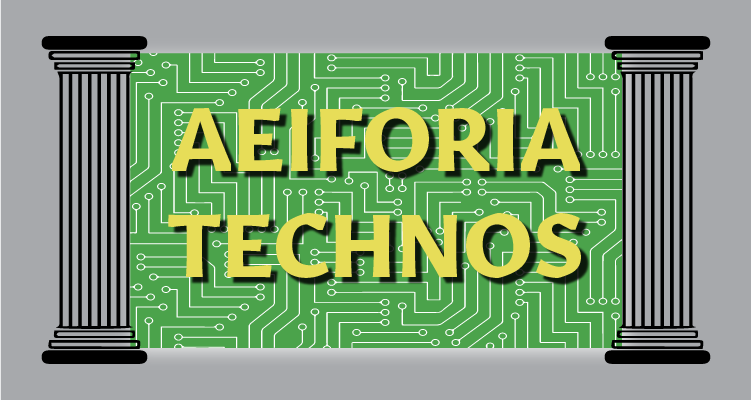Electronics and Plastic Surgery
 InfoComm 2018 recently wrapped up in Las Vegas where manufacturers, consultants, integrators and end users all gathered to hawk their wares and kick the tires of the latest gadgets to cure their ills. It is a show where a sea of gizmos and gadgets fill close to every square meter of the convention center. This also includes the endless supply of electronics these folks brought with them personally such as laptops, smart phones, smart watches and tablets not to mention the occasional hoverboard. It would be staggering to think of all the raw materials it takes to create all these electronics in terms of the three to four dozen different materials in a typical piece of equipment – primarily minerals, metals, chemical additives and most arguably the biggest of the bunch, plastics.
InfoComm 2018 recently wrapped up in Las Vegas where manufacturers, consultants, integrators and end users all gathered to hawk their wares and kick the tires of the latest gadgets to cure their ills. It is a show where a sea of gizmos and gadgets fill close to every square meter of the convention center. This also includes the endless supply of electronics these folks brought with them personally such as laptops, smart phones, smart watches and tablets not to mention the occasional hoverboard. It would be staggering to think of all the raw materials it takes to create all these electronics in terms of the three to four dozen different materials in a typical piece of equipment – primarily minerals, metals, chemical additives and most arguably the biggest of the bunch, plastics.
Now I certainly have covered many aspects of how these materials can have a major impact on people’s health and the environment. Many of these substances such as lead, mercury, cadmium, for example are known to highly hazardous when coming in direct contact with them. When worked with in a controlled environment and used in technology that is kept in working order, they pose little risk. It is the end of the life cycle — e-waste — that it becomes an issue. Particularly when not disposed of in an environmentally responsible way. Now professional solutions manufacturer’s might argue that what they produce is drop in the bucket compared to other industries such as automotive or construction, when combined with consumer electronics however, it is in the top ten worst polluters in the world and rising fast as more devices come on line ever day in the billions.
So, what if the ICT manufacturers could help reduce that trend in a new and innovative way that was cost effective and provided the same benefits as the original materials? If you look at the low hanging fruit of the mix of materials, plastics seem to be the easy target. The use of plastics was derived from by-products of the oil refining process. Surprisingly enough it was invented because a New York firm in 1869 was took to stem the expanding natural Ivory trade and offered money to anyone that could come up with an acceptable alternative.
It was John Wesley Hyatt who took up the challenge and created the first synthetic polymer by mixing camphor (made from turpentine oil – a byproduct of oil refining) and cotton fiber cellulose creating celluloid. It was touted as an environmental revolution as it was going to save the hunting and killing of wild animals to extinction for their ivory and was billed as a shapeable (or plastic) material made to imitate natural substances that could protect the natural world from the destructive forces of human need. Additionally, since the materials that made the celluloid were renewable cotton fibers and camphor, the cost was cheap, freeing up markets to become affordable compared to rare and often expensive natural materials. A win/win so it was deemed.
I wonder what Mr. Hyatt would think about plastics now seeing how its progression has been the cause of so much destruction in the environment after all. Or how he would feel floating past the Great Garbage Patch in the ocean made primarily of plastics. Would he have changed is mind and not entered the contest? Now I am in no way advocating the complete abandonment of plastics as there certainly have been significant advancements in society as a result. But what if plastics could be made to be biodegradable and non-toxic? There are already materials scientist who have been able to create computer chips made from wood and microbiologist Anke Domaske is doing the impossible by making technical components for electronics from spoiled milk that otherwise would be tossed out.
Companies such as Apple and HP are currently exploring was to 100% remove PVC from their products and replace it with bio-gradable materials. Additionally, major manufacturers of consumer electronics are looking for ways to simply cut plastic out all together for many reasons – weight, cost, and environmental impact. Packaging is another area where significant progress is being made including the use of Styrofoam made from corn that is biodegradable. Lastly, manufacturers are looking for ways to develop products that pull away from the disposable mentality by allowing consumers to replace or upgrade at the component level rather than the whole device landing in the waste stream.
By giving plastics a bit of nip/tuck in the electronics industry and rethinking what it really means to be plastic would go a long way towards what Mr. Hyatt had intended his creation to be: a better and more environmentally friendly solution.





